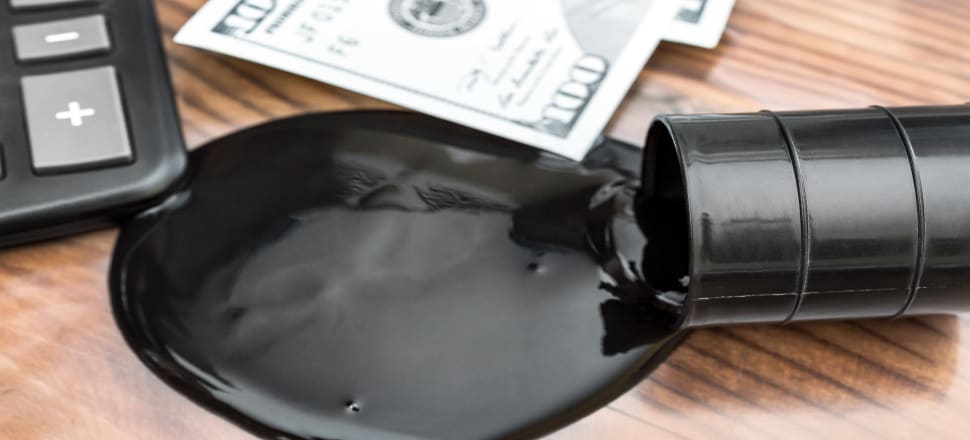
Some analysts predict oil prices will breach $100 a barrel before the year is out, and a weaker kiwi dollar will worsen the pain at the pump.
Petrol prices are shaping up as the newest headache for consumers and the Reserve Bank, following a 14 percent lift in the oil price in July – the steepest monthly increase since January 2022.
Brent Crude oil futures gained for a seventh week to close at US$86.55 per barrel on Saturday (NZ time) as the kiwi dollar fell below US 60 cents to a nine-month low. That will create a double whammy for motorists in the coming weeks.
Fuel monitoring website Gaspy showed the average nationwide price for 91 unleaded is now $2.80 a litre, up 5.3 percent over the past 28 days. A weaker kiwi dollar is likely to see prices at the pump climb higher in the coming weeks as new supplies come on stream.
READ MORE: * Climate optimist loses faith in oil and gas industry * How motorists can hack excise tax rise to save hundreds of dollars
The International Energy Agency said worldwide consumption hit a record high of 103 million barrels a day in July, ahead of earlier forecasts, driven by strong summer air travel and surging demand in China.
The thirst for oil is straining an already tight market. Saudi Arabia said last week it would extend a 1 million barrel a day output cut designed to drive up prices into September. Some analysts are now predicting that prices will breach $100 a barrel before the year is out.
While the Reserve Bank is widely expected to leave the official cash rate unchanged at 5.5 percent this Wednesday when it releases its latest monetary policy statement, the implications of a lower kiwi dollar fuelling imported inflation and pushing prices higher, particularly petrol, has the potential to be an ominous development for an economy already under strain.
On a positive note, cash-strapped consumers finally received some good news in the form of slightly lower food prices in July, though very few are likely to have noticed the decrease.
It’s only the third month since December 2021 that food prices have eased suggesting that one key inflation component may have peaked – at least for now – as the impacts of flooding resulting from Cyclone Gabrielle, which devastated parts of the Hawkes Bay region earlier in the year, begin to subside.
Statistics NZ said the month-on-month fall was driven, in part, by prices for fruit and vegetables, declining 4.1 percent last month, though they remain 6.2 percent more expensive than this time last year.
ASB Bank economists said that if the downward trend for food prices was sustained, New Zealand was likely to see lower consumer price index inflation in the next quarter, suggesting that annual inflation is expected to continue to slow.
“It is our view that conditions are in place that should see New Zealand food price inflation continue to cool heading into 2024, but a difficult year still lies ahead for NZ consumers.”
Inflation expectations continue to lift
The latest quarterly survey of inflation expectations will also create another hurdle for the Reserve Bank to weigh up ahead of this week’s official cash rate decision, particularly when it comes to wage rates.
Respondents to the central bank's July survey expect wages and house prices to keep lifting in two years’ time with the consumer prices index seen as rising at an annual 2.83 percent two years from now, up from 2.79 percent in the prior survey of inflation expectations.
Given expectations have lifted, Westpac Bank senior economist Satish Ranchhod pointed out that while price pressures in some sectors are easing, they are doing so only “gradually” suggesting the Reserve Bank has more work to do in the future given annual inflation is still running at 6 percent.
While the survey found annual inflation rising 4.17 percent on a mean basis in the year ahead, down from 4.28 percent in the central bank’s prior survey, wages are expected to continue pushing higher, based on expectations for the annual percentage change in private sector average hourly wage rates.
The mean one-year-ahead expectation for annual wage inflation was 5.04 percent, an increase of 24 basis points from 4.80 percent recorded in the prior survey last quarter. The mean two-year-ahead annual wage inflation expectation increased by 13 basis points from last quarter’s value of 3.53 percent to 3.66 percent.
Houses prices are also expected to lift. The mean estimate for annual house price growth one-year ahead rose 431 basis points to 1.42 percent from the previous quarter’s estimate of a 2.89 percent decline marking the first positive expected mean figure for the housing sector since December 2021.
The data for the latest report was obtained from 30 business leaders and professional forecasters between July 20 and July 28.
NZ sharemarket dips ahead of the start of earnings season
If trading on the NZ sharemarket last week was any guide, investors remain nervous ahead of the start of earnings season which kicks off today.
The NZX50 ended the week down almost 1 percent at 11,837 after briefly slipping below 11,800 on Friday.
Contact Energy will report its full year result to the end of June prior to the market opening, which will be followed by results from PGG Wrightson tomorrow, Fletcher Building on Wednesday, Skellerup on Thursday and Spark on Friday.
However, the ‘main course’ for this earnings season will come next week when more than 30 listed companies will report their financial results including Air New Zealand, Port of Tauranga and SkyCity Entertainment.
Feeling the impact of higher food prices and surprising the market with a downbeat outlook, Restaurant Brands was the latest company to see its share price slump after announcing profits would be down for the year.
The news sent its shares tumbling 15 percent for the week to a six year low of $5.26; a far cry from the $16 the shares traded at two years ago.
Restaurant Brands said net profit after tax guidance for the 2023 financial year is now expected to be in the range of $12 million to $16m.
The latest announcement continues a downward trend in the company’s performance over the last two years which has seen its profitability decline by more than 75 percent from $51.9m in 2021 and $32.1m in 2022.
The company said it was continuing to face global inflationary pressures across the board, particularly when it came to rising ingredient and wage costs, which it said were having a “significant and ongoing impact on profitability”.
Meanwhile, homewares and sporting goods retailer Briscoe Group reported flat first half sales, with gross profit margins increasingly under pressure.
Sales for the six months ended July were largely unchanged on last year at $369.2 million.
Briscoe Group managing director Rod Duke said the retail environment continued to be challenging and unpredictable to navigate from an economic perspective saying it was unlikely the business would be able to replicate last year's full-year record net profit after tax result of $88.4 million.
Duke also highlighted the rise in criminal offending targeting retail businesses which he said had also impacted the company’s performance.
"Over the last two years the group has suffered seven ram raid attacks and at least 12 other significant break-ins causing substantial property damage and stock loss.”
Briscoe shares fell 2 percent for the week to close at $5.70.
A2 Milk shares also eased last week after Chinese competitor Feihe warned of a 23-36 percent drop its annual profit blaming due to lower birth rates and intense competition sending its Hong Kong listed shares down by 13 percent.
On a related note, signs of increasing stress in the rural sector were highlighted in a new survey which showed farmers’ confidence hitting a record low with the industry’s mental health support service saying it had seen a significant rise in calls from distressed farmers this year.
Federated Farmers president Wayne Langford said a July survey of more than 1000 dairy, sheep, beef, and arable farmers found their confidence was at historic lows, with fewer farms making profits and a steady rise in the number expecting to go into debt compared to a survey conducted earlier in the year.
Lower prices for milk and meat together with higher input costs as well as increasing regulation were all to blame, Langford said.
The farmer confidence survey was conducted before Fonterra’s latest milk price announcement which reduced its payout forecast by $1 to $7 and as a result Langford said confidence would have dipped further amongst dairy farmers with many farms unprofitable if the payout remained below $8.
The four biggest concerns for farmers which the survey identified were: debt, interest rates and bank support, regulation and compliance costs, and climate change and ETS policy, he said.
US stocks fall for a second week following higher cost pressures
US stocks slipped 0.3 percent last week after producer price inflation data came in ahead of market expectations, heightening concerns that the world’s largest economy could be facing higher interest rates for longer than had previously been forecast.
Friday marked the second consecutive week of losses for both major US stock indices and the first time the Nasdaq has had back-to-back weekly declines since December, and the first time for the S&P 500 since May.
Shares in chipmaker Nvidia suffered their biggest weekly drop in 11 months slumping almost 10 percent for the week ahead of new technology trading restrictions with China coming into force.
The broader market’s moves came after data in the US showed that annual producer inflation accelerated to 0.8 per cent in July from 0.2 per cent in the previous month. The reading was marginally above the 0.7 per cent forecast of economists polled by Reuters.
A day earlier, the latest US consumer price inflation report showed that prices rose at a slower-than-expected annual rate of 3.2 per cent in July, up from 3 per cent in the previous month.
Despite the uptick in the consumer price data, overall price pressures in the US have eased over the past year following an aggressive tightening campaign by the Federal Reserve, which has taken interest rates to their highest level in 22 years.
The yield on the policy-sensitive two-year US Treasury rose 0.07 percentage points to 4.89 percent, while yields on the benchmark 10-year note hit a 10 month high of 4.2 percent at one point last week and just 13 points below the 15-year high they reached in October last year. Bond yields rise when prices fall.







